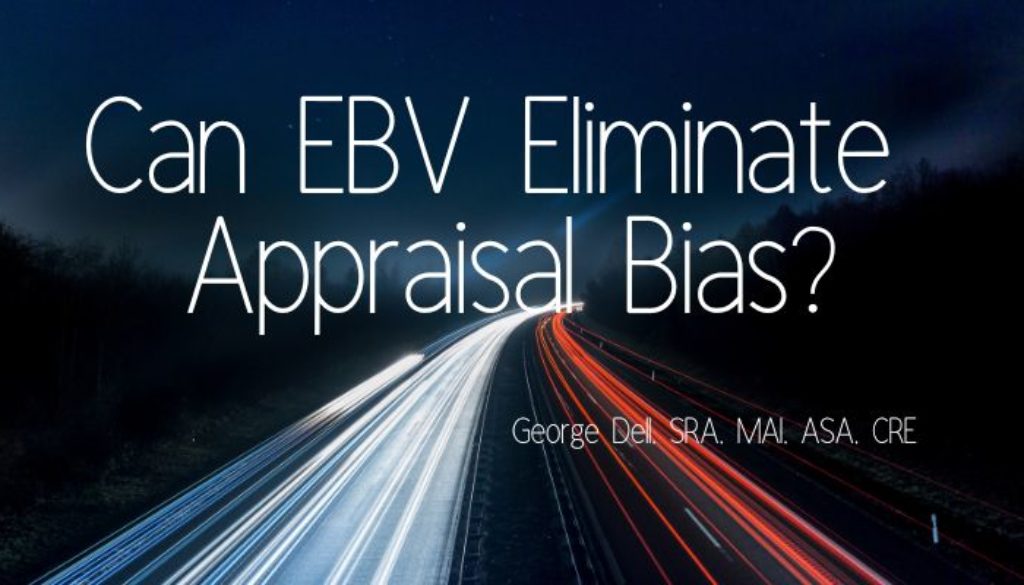Yes, personal bias in appraisals can be eliminated.
The appraisal ‘process’, in its current standard, is “loose.” It is not internally biased either way. But it is vulnerable to systemic human and analytic bias. It enables and conceals bias.
It is vulnerable to attack — as being “too high” or “too low,” depending on the viewpoint of the critic.
The current form is mandated under standards enforced by the federal agencies under the Dodd-Frank Act. The criteria for an acceptable ‘scope of work’ is about the appraiser, not the work output. Current quasi-governmental standards require that the work be ‘credible.’ Credible is defined specifically: “worthy of belief.”
The scope-of-work standard for “federally-related transactions” requires that the appraiser:
- Do what peers would do in the same situation;
- Do what clients expect.
The ‘vulnerability to bias’ is embedded in the federally-subsidized standards, and enforced non-uniformly by the 50+ state jurisdictions. So wherefrom comes the ability to bias?
The bias is because both the personal and the analytic requirements are subjective and personal. The process that ‘peers’ do – is select three to six comparables to compare. From judgment. From believable judgment. From judgment worthy of belief. Worthiness of belief is the first guide. Second is that other appraisers all do it this way. Third is that it is what clients (lenders) expect.
The Impossibility Theorem of Valuation: The first rule of Evidence Based Valuation (EBV)© is You can’t get objective results from subjectively selected data! You can’t.
Subjectively selected data (called ‘picking comps) is embedded in the five frictions of appraiser education, regulation, client expectations, peers’ actions, and licensing.
The rule of ‘picking comps’ enables and enforces the likelihood of bias in appraisals. It effectively excludes modern (yet well-established) data science methodology for similarity matching. Similarity matching is a core part of the science of data. Yet it is fully ignored by the ‘five frictions’ noted above.
So how can personal bias in appraisals can be eliminated? Simple.
We enforce the use of objectively relevant data, from complete sales data sets, eliminate the use of subjective comp picking. Simple. Simple, yet seemingly impossible. The five frictions you see!
The five frictions act on each other. They interact and bind each other to the system of appraisal developed in the 1930s. “Pick comps, make adjustments, give opinion.”
Personal bias can be easily hidden in this enforced system of subjectivity. Subjectivity which enables and even enforces the freedom to be biased. I am not saying appraisers are biased – only that the system makes honest appraisers vulnerable to accusations of bias. And enables dishonest appraisers to comply with the standards, while tweaking the result to the desired direction of bias.
Yes, we can eliminate personal bias by eliminating analytic bias. We have the data. We have the analytics. We have competent appraisers. We need the right regulation!
Bias up, bias down. Have it your way. Just be “worthy of belief!
EBV (Evidence Based Valuation)© is readily available methodology. It begs adoption by regulators and government-sponsored enterprises. EBV is appraisal modernized!

June 22, 2022 @ 9:17 am
EBV sounds like an AVM. What is it exactly and how does it more reliable than the unreliable AVM
June 22, 2022 @ 10:50 am
Does the EBV provide a single point valuation and is this accept by lenders?
June 22, 2022 @ 12:54 pm
George is not available to respond directly today. He’s preparing to teach Stats, Graphs, and Data Science 1 starting tomorrow.
@Bob Jones: May I suggest you read George’s blog “What is EBV?”. He has written extensively on this topic. There is a search bar to the right of the blog.
@Jimmy1947: Did you watch George’s webinars with Lyle Radke, FannieMae Director of Collateral Risk and Scott Reuter, Chief Appraiser, FreddieMac? As a subscriber to George’s blog, you have access to the replay of those webinars. I hope you find time to watch.